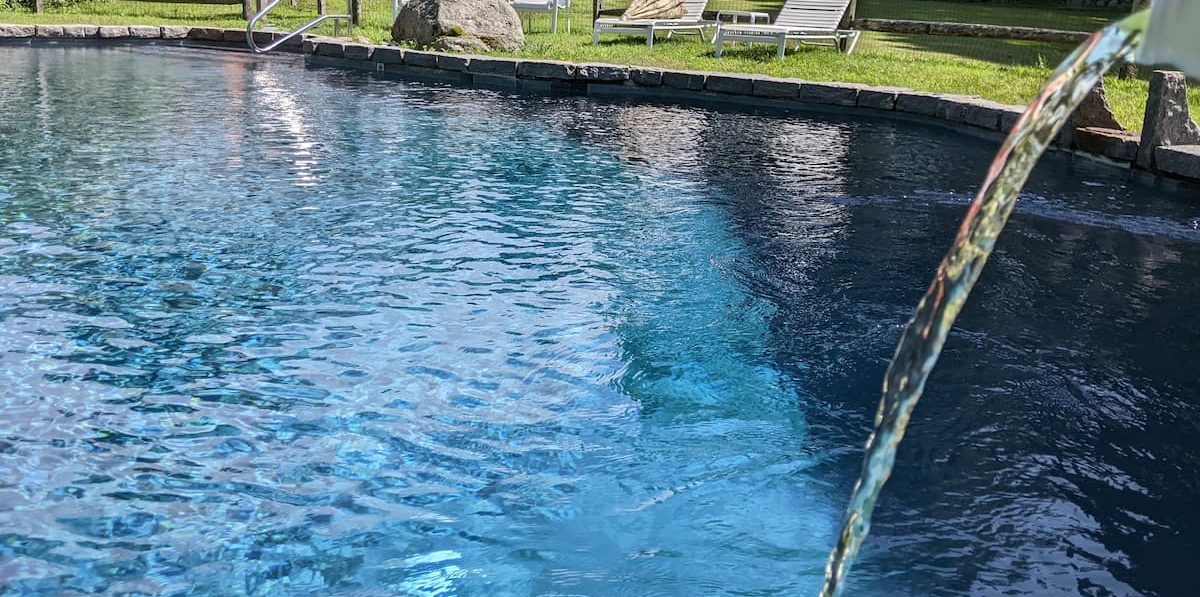How Long Should You Wait After Shocking a Pool to Swim?

If testing reveals that you need to shock your pool, the next logical question is how long you should wait before getting back into it.
Most resources recommend waiting at least 24 hours before jumping in. While that seems like a reasonable time limit, the actual answer lies in the relationship between free chlorine (FC) and cyanuric acid (CYA).
After shocking, if testing shows no issues or obvious signs of a water problem (cloudiness, green water, visible algae), it is safe to swim when FC levels are below their shock level relative to CYA.
Let’s dive into what that means.
How Do You Find Shock Level?
When it comes to chemistry levels, FC and CYA go hand-in-hand, as CYA acts as a stabilizer for overall chlorine levels.
The shock level is based on CYA readings, and CYA determines how high your chlorine levels need to be.
According to Richard Falk, a leading voice in pool water quality and CYA, FC levels should be about 7.5% of CYA. When shocking the pool, FC should be around 40% of CYA.
With that in mind, here would be your shock level based on CYA:
| Current CYA Level | 7.5% Level (Minimum) | Shock Level Range |
|---|---|---|
| 30 ppm | 2 | 12 ppm |
| 40 ppm | 3 | 16 ppm |
| 50 ppm | 4 ppm | 20 ppm |
| 60 ppm | 5 ppm | 24 ppm |
| 70 ppm | 5 ppm | 28 ppm |
| 80 ppm | 6 ppm | 32 ppm |
| 90 ppm | 7 ppm | 36 ppm |
| 100 ppm | 8 ppm | 40 ppm |
Once you get above 60-70 ppm of CYA, shocking becomes a little unrealistic.
That is why recommended levels should fall between 30-60 ppm. Saltwater pool owners can raise their CYA a bit more to 70-90 since chlorine is routinely added throughout the day.
How Long After Shocking Can You Test The Water?
You can test FC levels about an hour after a shocking dose. This will ensure the chlorine has had time to fully mix with your pool water.
This is true for any chemical mixture, but make sure the pump and filter are running when adding your chlorine.
One important factor in shocking your pool is maintaining that FC shock level throughout the process. This requires testing multiple times daily as the chlorine continues to eliminate algae and other contaminants.
When Should You Shock a Pool?
Let’s be clear: shocking should not be a part of your pool maintenance routine. All too often, pool resources will recommend shocking every week to maintain proper water balance.
But if your FC levels are within a balanced range at all times, then there is no reason to shock. Ever!
However, there are legitimate reasons that a pool would require raising to shock level. When testing reveals something growing in the pool or there is a noticeable change in the water’s appearance or color, chances are you have issues with your water that need to be taken care of.
Shocking is an appropriate next step to mitigate or eliminate these issues.
Testing Reveals All!
The primary goal of shocking is to get rid of any living contaminants in the water. Water can be crystal clear but have an algae spore growing.
The only way to know that is by testing. And the only way to know how much chlorine to add (and, more importantly, when the shock is over) is by testing. The quicker it is over, the quicker you can go back to enjoying the pool!
